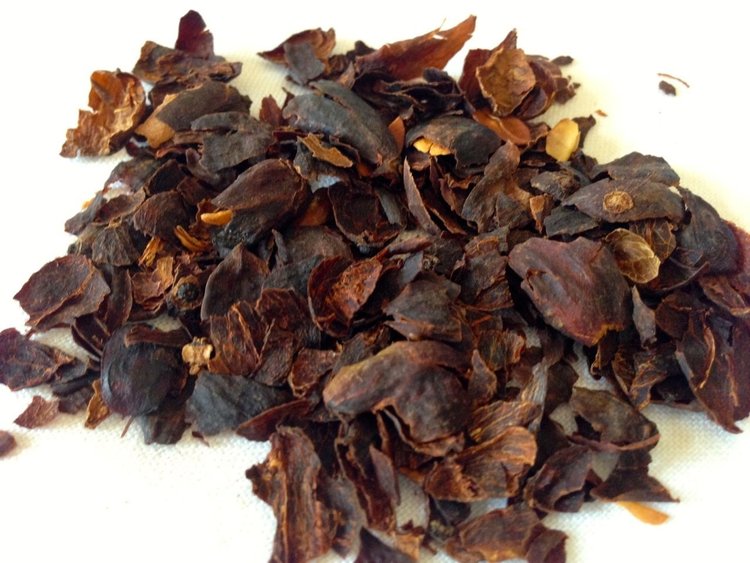
Coffee beans are actually cherry pits from the fruit of coffee trees (or shrubs). While coffee brewed from these cherries’ processed and roasted pits is one of the most popular beverages in the world, tea made from the cherries’ fruit is also widely drunk in certain parts of the world. Cascara has been enjoyed in Ethiopia and Yemen, and now growers in El Salvador and Bolivia (and elsewhere) are beginning to export it to the United States.
Cascara is a Tea from Coffee Cherries
The term “cascara” comes from the dried fruit, or husks, of coffee cherries that are used to make the beverage. The word means “peel,” “husk” or “skin,” and this is the part of the cherry that’s used for the beverage. The husks themselves are like dried fruit that would be used in herbal teas, but they’re a little bigger and more leathery than most dried fruit that’s put in tea.
The most common way to brew cascara is to steep it in hot water like tea (although you can also make a cold brew). The resulting tea tastes a lot like a fruity, herbal tea — but its caffeine level is more akin to that of a black tea.
(Note: Cascara, the tea made from coffee cherries, shouldn’t be confused with cascara sagrada, which is a dried bark that used to be used in medicines and is today available as a dietary supplement. The two are very different products, coming from different parts of plants and from different plants.)
Trying Cascara is an Educational Experience
You may not want to turn down a pour-over or americano in favor of a cup of cascara on a daily basis, but the tea is worth trying at least once. If you like herbal teas, you may like the flavor quite a lot. Additionally, you might find that it’s a good alternative to coffee in the afternoon or evening, when you want a little pickup but don’t want all the caffeine that coffee contains.
Even if you end up not liking cascara, though, trying it will be an educational experience that teaches you a little more about coffee. You’ll get to see the dried fruit that surrounds coffee beans, and taste the fruit. This is, of course, the fruit that the beans grow inside of. It’s also the fruit that naturally processed beans are left to ferment in. After trying the fruit brewed on its own, you may have a greater appreciation for how letting beans ferment inside the fruit can influence a coffee’s flavor with more fruity or other notes.



